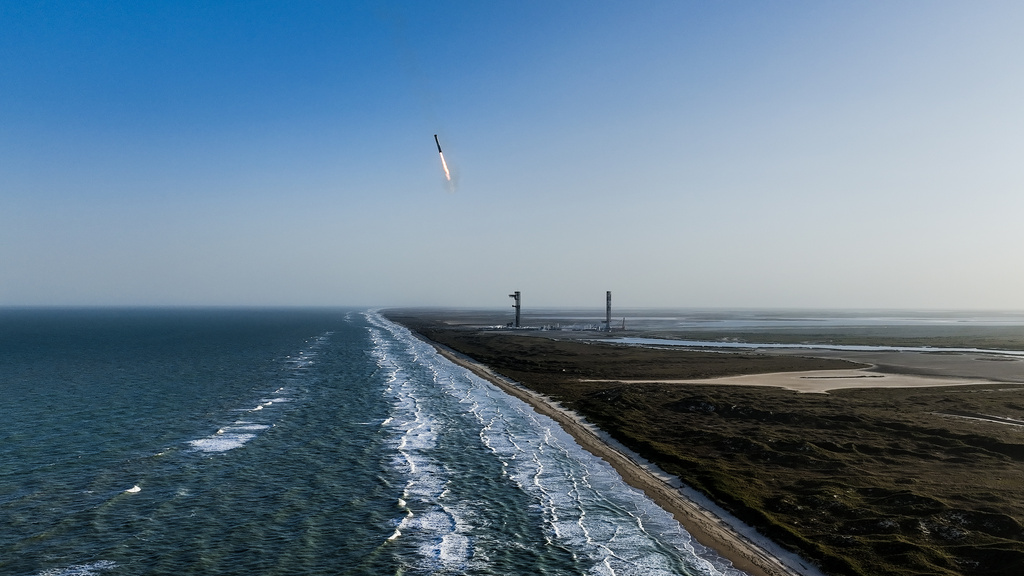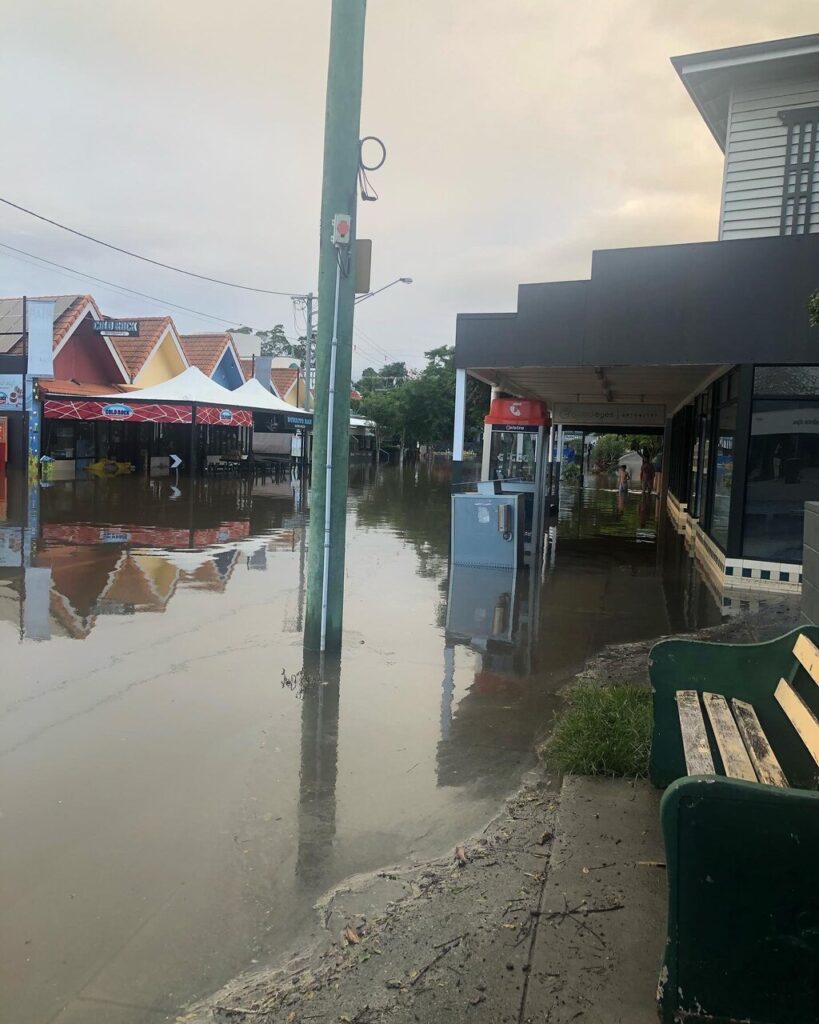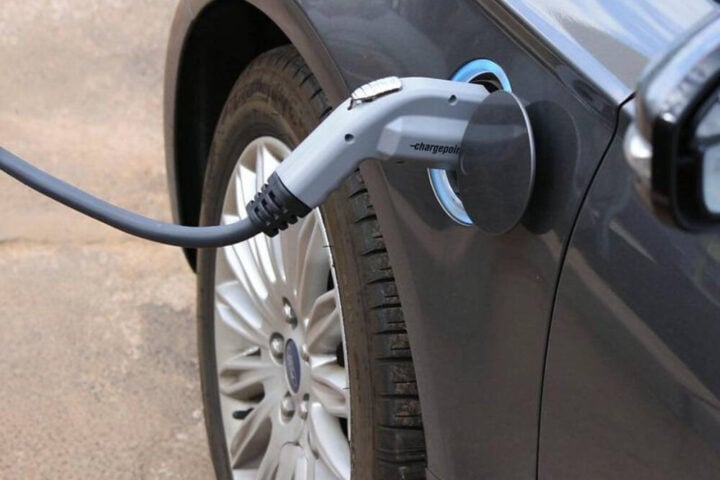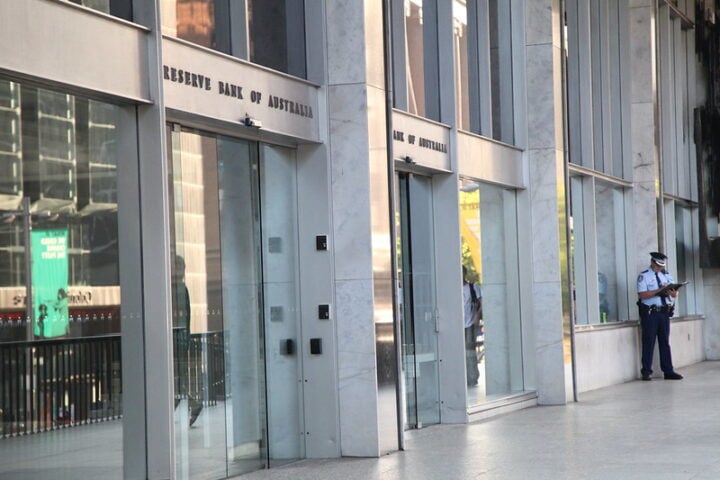SpaceX’s massive Starship spacecraft exploded in space minutes after liftoff on Thursday, marking the second consecutive failure for Elon Musk’s ambitious Mars rocket program. The explosion sent fiery debris streaking through the skies over Florida and the Bahamas, disrupting commercial flights at several major airports.
The 123-meter rocket lifted off around 6:30 PM ET from SpaceX‘s Boca Chica, Texas facility. While the Super Heavy first-stage booster successfully returned to Earth and was caught mid-air by a SpaceX crane, the Starship upper stage encountered serious problems.
“Unfortunately, this happened last time too, so we’ve got some practice now,” SpaceX spokesman Dan Huot said during the live stream after the company lost contact with the spacecraft.
What Went Wrong
The failure occurred when multiple Raptor engines shut down, causing the spacecraft to spin uncontrollably. SpaceX’s live stream showed the Starship upper stage spinning in space before contact was lost completely. The company later posted that “the vehicle experienced a rapid unscheduled disassembly” – their technical term for an explosion.
This failure mirrors issues from the seventh test flight just over a month ago, which also ended in an explosion during a similar phase of the mission. The previous failure in January was caused by a fire that ignited near the ship’s liquid oxygen tank, according to SpaceX.
Impact on Air Travel
The Federal Aviation Administration (FAA) briefly issued ground stops at Miami, Fort Lauderdale, Palm Beach, and Orlando airports because of “space launch debris.” Flights were also diverted around Turks and Caicos as debris scattered over parts of the Caribbean.
“During the event, the FAA activated a Debris Response Area and briefly slowed aircraft outside the area where space vehicle debris was falling or stopped aircraft at their departure location,” an FAA spokesperson said.
Similar Posts
Regulatory Response
The FAA has opened an official mishap investigation into the incident and will require SpaceX to examine the failure’s cause. The agency must sign off before Starship can fly again.
Notably, the FAA allowed this launch despite not having completed its review of the previous failure in January. After that explosion, the FAA temporarily grounded commercial flights and ordered SpaceX to carry out an investigation.
Wider Implications
The back-to-back failures represent significant setbacks for SpaceX’s ambitious plans. The Starship rocket system is central to Elon Musk’s vision of sending humans to Mars by the end of this decade. It’s also a key component in NASA’s Artemis program, which aims to return humans to the moon.
SpaceX had introduced upgrades following the January failure, including changes to fuel lines and fuel temperature, but these modifications proved insufficient to prevent another explosion.
SpaceX’s Response
“Success comes from what we learn, and today’s flight will offer additional lessons to improve Starship’s reliability,” SpaceX stated after the failure.
The company emphasized that these test flights are part of the development process, and each failure provides valuable data for future improvements. SpaceX’s team is now reviewing flight data to understand the root cause of the explosion.

Technical Challenges
These consecutive failures highlight the significant technical challenges SpaceX faces in developing a fully reusable spacecraft designed for long-distance space travel. The Starship program has made progress – the successful catching of the Super Heavy booster represents an achievement – but the upper stage reliability issues are proving difficult to overcome.
The eighth test flight was intended to deploy mock satellites and demonstrate Starship’s capabilities, goals that remained unfulfilled after the explosion.
FAQ
Frequently Asked Questions
What caused the SpaceX Starship to explode?
According to SpaceX’s livestream, the explosion occurred after multiple Raptor engines shut down, causing the Starship upper stage to lose altitude control and spin uncontrollably. The company described it as “a rapid unscheduled disassembly” and is currently investigating the root cause.
Was anyone hurt in the explosion?
No. The Starship rocket wasn’t carrying any astronauts or passengers during this test flight. This was an uncrewed test mission focused on advancing the spacecraft’s development.
How does this failure affect SpaceX’s Mars mission plans?
This second consecutive failure represents a significant setback for SpaceX’s ambitious timeline to send humans to Mars by the end of this decade. The company will need to identify and fix the problems before moving forward, which could delay their timeline for Mars missions.
Will this affect NASA’s Artemis moon program?
The Starship is a key component of NASA’s Artemis program, which aims to return humans to the moon. Continued failures could potentially impact the timelines and contracts between NASA and SpaceX for lunar missions, though the specific impacts remain to be seen.
What happens to the debris that fell over Florida and the Bahamas?
The FAA activated a Debris Response Area during the event. SpaceX and relevant authorities will likely coordinate cleanup efforts in affected areas. The environmental impact of debris and fuel remnants from the failed launch is a concern that will need to be addressed.
When will SpaceX attempt another Starship test flight?
Before SpaceX can attempt another Starship test flight, the FAA requires the company to complete a mishap investigation into this failure and receive agency approval. There is no specified timeline for when this process will be completed or when the next test flight might occur.

















